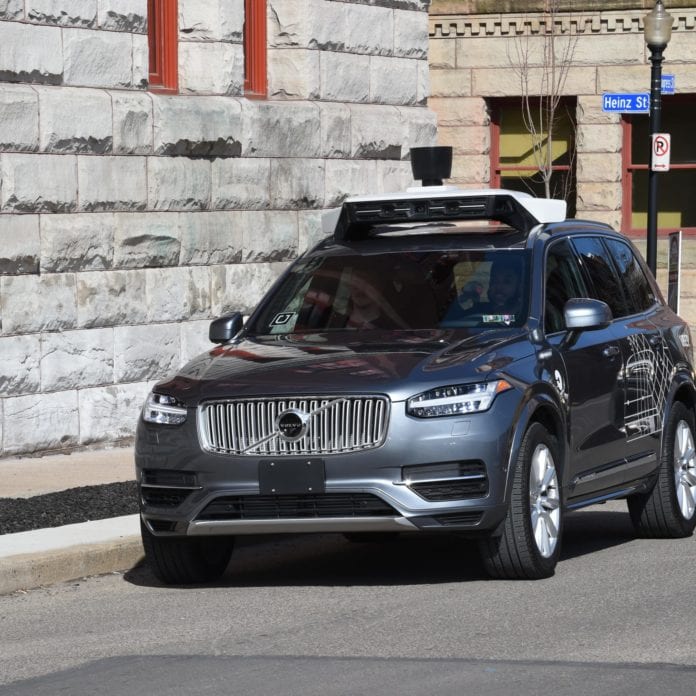Uber has pulled its self-driving vehicles from the roads after one of its autonomous vehicles struck and killed a pedestrian in Arizona, according to published reports. This is believed to be the first pedestrian fatality associated with an autonomous vehicle.
The crash occurred in Tempe, Ariz. on Sunday night, The Associated Press reported. A 49-year-old woman was walking a bicycle outside the lines of a crosswalk and moved suddenly from a median into a traffic lane when she was struck by the Uber Volvo, which had a back-up human driver at the wheel, according to police accounts. Tempe Police Chief Sylvia Moir told the San Francisco Chronicle that the vehicle was traveling at 38 miles per hour in a 35 mph zone and did not attempt to brake, and that the first alert to the driver was the sound of the collision; Moir did not rule out the possibility of charges against the human driver but said that “preliminarily it appears that the Uber would likely not be at fault in this accident.”
Uber tweeted that it is cooperating with police investigating the incident. Testing of autonomous Uber vehicles has been suspended in the Phoenix area as well as in San Francisco, Toronto and Pittsburch, the AP reported, and the National Transportation Safety Board and National Highway Traffic Safety Administration, have both sent investigators to learn more about the Tempe incident.
Our hearts go out to the victim’s family. We’re fully cooperating with @TempePolice and local authorities as they investigate this incident.
— Uber Comms (@Uber_Comms) March 19, 2018
Arizona is widely seen as one of the states most friendly to autonomous vehicle testing, with light regulations and no reporting requirements for vehicle incidents during testing. The state’s governor, Douglas Ducey, encouraged the industry to come to Arizona and conduct testing with a 2015 executive order that laid out just a few, simple rules such as requiring autonomous vehicle to be under manned or remote control by licensed Arizona drivers.
“It is in Arizona’s interest to support the development of these technologies, by allowing testing and operation of self-driving vehicles on certain public roads, in order to continue to advance the technology,” according to the executive order.
That order was modified on March 1 in a new executive order which provided a few more specific definitions and guidelines under which autonomous vehicle testing must operate. The state said in that executive order that it has had more than 600 vehicles with automated driving systems operating on its public roads over the past two years.
Tempe Mayor Mark Mitchell said in a statement that the city has supported autonomous vehicle testing “because of the innovation and promise the technology may offer,” adding that “testing must occur safely. All indications we have had in the past show that traffic laws are being obeyed by the companies testing here.” He called the temporary suspension of testing in Tempe “a responsible step to take at this time.”
Here is my statement regarding the tragic event that occurred in Tempe overnight. pic.twitter.com/3ql1WAxKpA
— Mayor Mark Mitchell (@AZMayorMitchell) March 19, 2018

